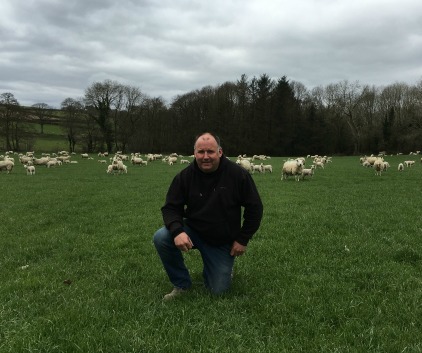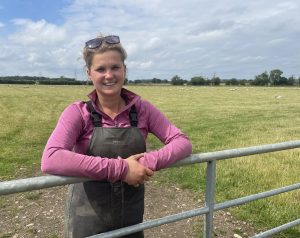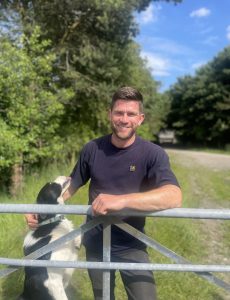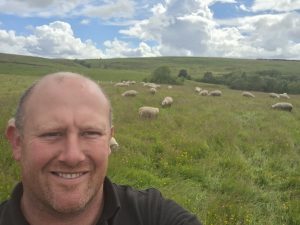with thanks to Robert and Tracy Powell and family, Blaenbwch, Powys
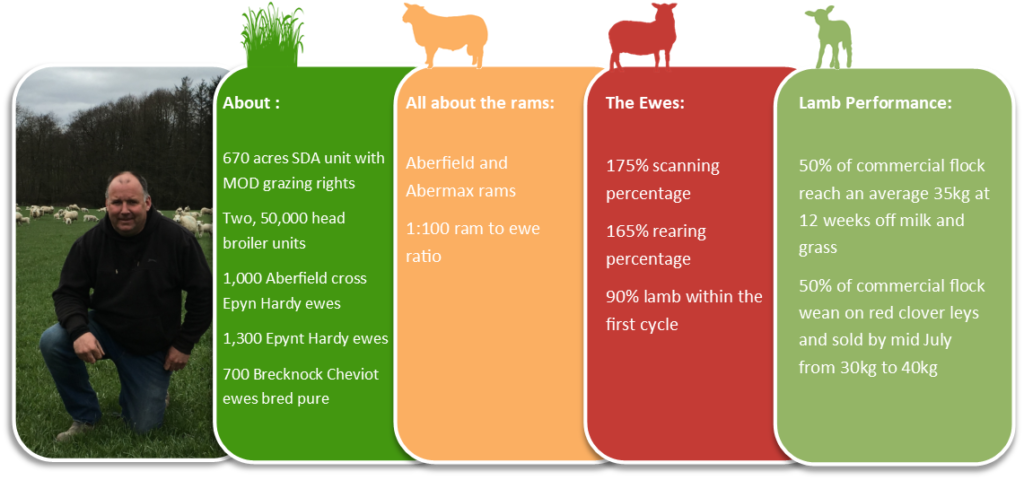
Robert and Tracy Powell are making more from less having replaced a traditional hill unit with a forage focused system. Introducing Innovis forage bred and reared genetics, and Rob says: “We have the sheep we want to do the job and they’re enabling us to reduce production costs.
“Our main commercial flock comprising 1,000 Aberfield cross Epynt Hardy ewes is crossed to either the Abermax or a Continental ram to produce light lambs and we continue to sell 95% of the crop through the live market,” he explains “We target trading 50% of the crop off milk and grass at an average 12 weeks and 35kg through the Builth ring, while the rest are weaned on to red clover leys and sold by mid-July from 30kg to 40kg.
“Introducing the Aberfield to our Epynt Hardy ewes and swapping a portion of the Continental rams for the Abermax is enabling us to both finish lambs to target weight one week earlier and reduce ram power. We’re able to introduce the Abermax in a ratio of one to 80 ewes and the Aberfield, one to 100 ewes.
Getting to grips with better grassland management and stepping up reseeding with new high value mixes became one of the priorities for Robert following an HCC scholarship tour to New Zealand in 2012. “We had to kick ass. Our traditional system had to change if the unit was to remain sustainable. We began to rejuvenate the stratified sheep enterprise and expand ewe numbers from 2,200. Our target was to achieve 3,000 head. Ten years on and we’ve got there, and we can honestly say it’s a million miles better than the past.
“We’re now breeding a smaller crossbred ewe maturing at 65kg to 70kg which we’ve achieved with the Aberfield cross Epynt Hardy. Using the Aberfield has allowed us to increase the stocking rates over our original Welsh Mules and enabled us to breed our own replacements as a closed flock. The ewes have proved good mothering ability and they can look after themselves for nine months of the year off grass and for the majority of time with little if any concentrate.’
He continues: “Whilst we can’t expand the grazing area, we have learnt about reseeding with higher value mixes and how to utilise for quality grazing. We have adopted a paddock system split into five-acre paddocks, moving the lambs on every two days after they’d taken down the sward from 1,800kg DM/ha to 1,100kg DM/ha.
“We have mob grazed 500 lambs off just 25 acres over a 10 to11 week period demonstrated some of Blaenbwch’s real potential from a combination of rotationally grazed high sugar grass, red clover, chicory and herbal ley mix.
“Adding fodder beet to the swedes and turnips we’d been growing for years has also contributed to us increasing stocking rate and minimising feed costs to 4p to 5p per ewe per day over the winter months until red clover silage is introduced and fed to the Aberfield crosses. We minimise concentrate to supplement forage just pre and post lambing depending on the season.”
Going forward and Robert says: “There’s no stopping, we are always looking for new opportunities to enhance a sustainable business with the main focus on the sheep enterprise.”
